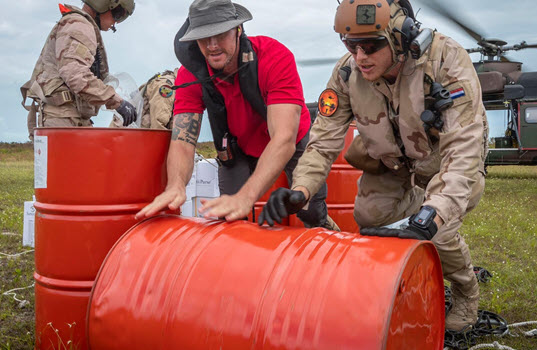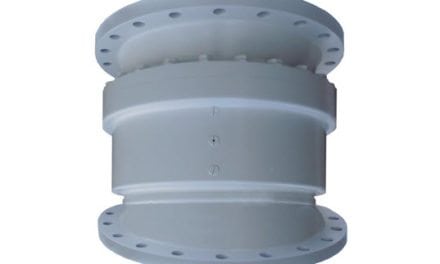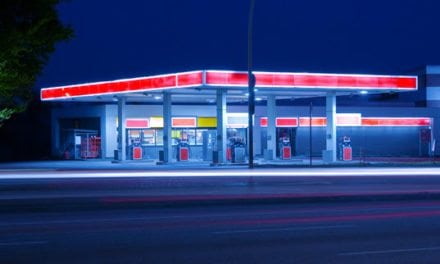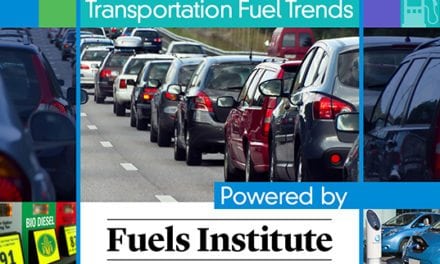By Keith Reid
The winds have died down, or the earth has stopped shaking and you step out of shelter into the scene of a disaster. The challenges ahead are overwhelming, but immediate thoughts turn to water, food and…fuel. Lights are out, vehicles are dormant, heating has stopped, water pumps are dry, food supplies need to move, and the Fuel Relief Fund (FRF) is there to get the fuel flowing again.
FRF is a charitable organization focused exclusively on fuel provisioning in natural disasters and complex emergencies. Leveraging fuel industry and humanitarian sector expertise, FRF manages emergency fuel supply chain in the direst of circumstances when fuel is a critical resource. It operates as both a first responder in the immediate aftermath of a disaster and as an expert adviser to governments and humanitarian aid agencies preparing for, or responding to, crisis-related fuel challenges. For example, the United Nations has asked FRF to help in writing a global SOP for emergency fuel procurement management, distribution, inventory management security.
Disaster responses include: Hurricane Katrina (U.S. 2005); Haiti earthquake (2010); Sendai earthquake and tsunami (Japan, 2011); Van earthquake (Turkey, 2011); Hurricane Sandy (U.S. 2012); Typhoon Haiyan (Philippines, 2013); Ghorka earthquake (Nepal, 2015); Ecuador earthquake (2016); Hurricane Matthew (Haiti, 2016); Hurricane Harvey (U.S. 2017); Hurricane Irma (U.S. 2017); Hurricane Maria (Puerto Rico, 2017); Hurricane Florence (U.S. 2018); Hurricane Michael (U.S. 2018); Cyclone Idai (Mozambique, 2019); Hurricane Dorian (Bahamas, 2019); Hurricane Laura (U.S. 2020); Hurricane Laura (U.S. 2020); and Hurricane Ida (U.S. 2021).
Sarah Kruger is the executive director of FRF, and Kate Bickford is administrator. Ted Honcharik is FRF’s founder and chairman of the board. He was previously the CEO of Pacific Tank Lines, a nationwide, full-service petroleum carrier. Honcharik began a new venture in the wake of Hurricane Katrina, providing free fuel for disaster-affected communities. He has grown FRF into an organization with global reach and forged impactful partnerships such as those with several United Nations agencies.
FMN: Could you describe what motivated you to found FRF?
Honcharik: I grew up in Miami, Florida, and I had been through a few small hurricanes. I was living in California when Andrew hit Miami, and I couldn’t help much. But I remember flying back there a couple of months later and how everyone was still living off generators and the destruction that occurred to family members and friends. I was with Pacific Tank Lines when Hurricane Katrina happened. My wife and I were watching the news and saw the people in line for fuel. I turned to her, and I said if we could raise enough money to fill up one of our tanker trucks I would meet it in Mississippi. We hit the coastline in Mississippi and Louisiana and moved the truck each day to another strategically hard-hit community and gave away free fuel for vehicles and cans for generators. Hurricane Rita happened right after that, which was in Louisiana and Texas, and we deployed and did it again. It was a wonderful experience.
My CFO told me that since I enjoyed doing that so much, why didn’t I turn it into a nonprofit organization. I called a few people in the fuel industry and the California market, and even some competitors, and from there it turned into the organization it is today.
FMN: Could you describe some of the services that you provide in a disaster area?
Honcharik: It depends on which country we’re responding to and whether it’s a hurricane or typhoon, tsunami or an earthquake. We always want to try to touch as many people as possible, as soon as possible. And, in the United States it’s mainly gasoline and some diesel—we’re always giving away diesel for emergency vehicles and things of that nature, and it’s gasoline for cars so that people can drive to find food, water, shelter, relocate or just to run their generators.
FMN: What are some of the more exotic fueling requirements?
Honcharik: It was freezing in Japan after the earthquake and tsunami, and the government asked if we could provide kerosene because many Japanese families stay warm with a portable kerosene heater. They have a five-gallon fuel can because gas stations sell kerosene for that purpose.
In Turkey for the [2011] earthquake it was kind of the same situation, but everybody was burning coal to stay warm. So, we were hauling truckloads of 50-pound sacks of coal and distributing them to the elderly and poor families that were not able to stay warm or lacked the funds.
In Ecuador following the [2016] earthquake we thought we were going to do gasoline and diesel, then when we arrived, we found out that families mainly cook using propane. We thought that that might be quite expensive, but the government subsidizes their propane, and they only pay $2.50 to have 15 gallons of propane delivered. We ended up doing that, and it was a huge success. It provided a family of four or so with heating, cooking, boiling water for a month, and we were able to touch over a 100,000 people.
FMN: How do you handle the fuel logistics?
Honcharik: The key is to acquire the fuel from the closest source possible. So, we’re all-hands-on-deck trying to contact fuel companies in those surrounding areas as rapidly as possible. We’ve been able to find that fuel within that country at every location. And, since we are giving it away for free, we’re always making sure that hospitals and rescue workers and the large NGOs, like the World Food Program, are covered because they need fuel to deliver their services.
Normally, we’re bumped up first in line even here in the United States when the fuel companies realize that we’re giving away all the fuel we’re purchasing. So, our source for fuel usually is uninterrupted.
With Hurricane Dorian [Bahamas], there was no fuel available on the island. So, just prior to it hitting we were already arranging a ship with hundreds of 55-gallon barrels of diesel and gasoline. We flew in before the fuel arrived and were lucky that there was a marina that had been destroyed, but it did have fuel underground. The marina donated all that fuel to us to do what we needed to do with it until our ship arrived. The Dutch military asked how they could help, and we were slinging loading barrels of fuel from helicopters to outer islands so that the generators could work for those communities as well.
FMN: What’s your footprint on the ground in one of these disaster areas?
Honcharik: I like to say that there’s no other organization in the world that shows up with a team of four people or less and touches more people. No water, food, shelter or medicine happens in a lot of these disasters until that fuel supply chain is opened up again. As soon as some fuel stations start opening and supply becomes available, we exit.
FMN: Some of these areas can be a bit dangerous during the disaster phase. Have you ever faced security concerns?
Honcharik: You are always going to face security concerns, even in the United States. You want to always make sure that you understand the surroundings. Sometimes the military is supporting us. Sometimes it is the local police.
But there’s too much bad press on things that happen negatively in these environments. Normally everybody’s just trying to help everybody else when it’s a natural disaster. When you get into conflict areas, obviously you have a whole different view, and security plans are put in place before you do anything.
FMN: Are there any particularly interesting stories you can share from some of your relief missions?
Honcharik: I have so many of them. You would be surprised at how many people just come up crying, hugging you and can’t believe that there’s an organization giving away free fuel in the situation that they’re living in at the moment.
We were providing fuel for a generator in Haiti for 100,000 people living in a makeshift location, and the doctor told me I had no idea how many rapes I prevented that night by keeping the lights on. There were two little girls in Ecuador singing to us in Spanish when we were giving away propane: “We have gas, now we can eat.” Just filling up one generator with 500 gallons of diesel, and now a town in the Philippines with 20,000 to 30,000 people has water to drink. The stories are endless.
FMN: Where do you get your funding and how can people participate?
Honcharik: They can participate by donating to www.fuelrelieffund.org. Most of our funding has been from our annual golf tournament. Unfortunately, that’s been canceled for the last few years because of COVID. So, we’re definitely in need of donations. When disasters happen, most of the funds that are raised are through our board members reaching out, and Sarah and Kate reaching out through social media. There’s an organization called Global Giving that has helped us with funds over the years. But funding is always the biggest challenge.
FMN: What are you up to today?
Honcharik: People say, are you happy now that you retired? Do you miss it? Being retired has been very enjoyable. Fuel Relief Fund provides me with enough excitement in life. I just enjoy the hell out of being able to jump when the need arises. And I never know when that might happen. So, it keeps my life exciting. I am very lucky.










